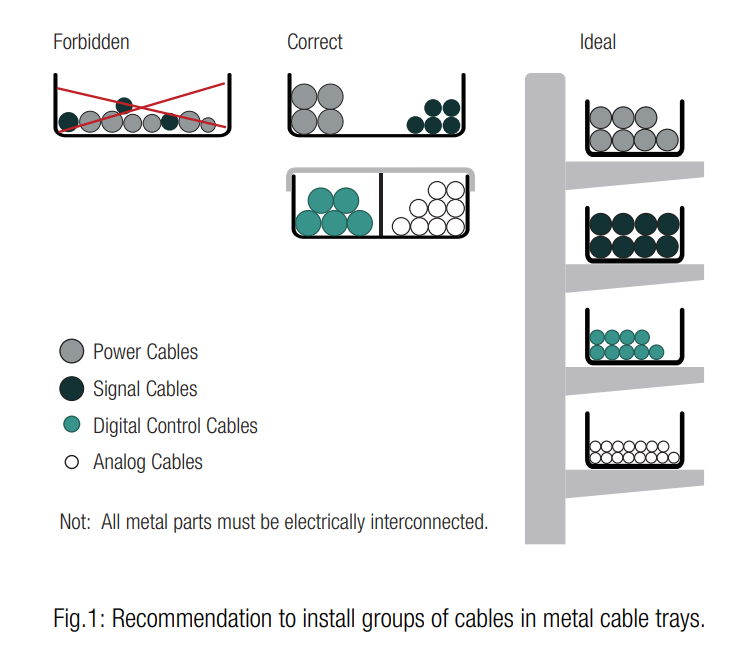ELECTROMAGNETIC COMPATIBILITY (EMC)
The EMC directive 2004/108/EC defines electromagnetic compatibility (EMC) as the ability of a device, equipment, or system to function satisfactorily in its electromagnetic environment without introducing intolerable
electromagnetic disturbances to anything in that environment. EMC is a basic factor to be taken into consideration
during the planning of installations and cabling systems. Any continuous metal system like cable tray systems
along the cable act as electromagnetic shield.
Installation Recommendations For Better EMC performance:
Separation of Cables: Different types of cables (power and low-level connections) should not be installed in the
same bundle or in the same cable tray. It is recommended to electromagnetically separate groups from one
another, either using separators or by installing different cables in different cable trays. If there are no separators,
sufficient distances must be maintained (see Fig.1). The distance between power and control cables must be at
least 5 times the radius of the larger power cable.

Bonding & Grounding Properly: As a shield, the metal cable tray is subject to bonding and grounding requirements. When properly bonded and grounded, the system improves EMC performance. When poorly bonded and
grounded, it degrades— potentially significantly—EMC performance.
Both ends of metal cable trays must always be connected to local earth electrodes. For very long cableways,
additional connections to the earthing system are recommended between connected devices. All connections to
the earthing system should be short.

